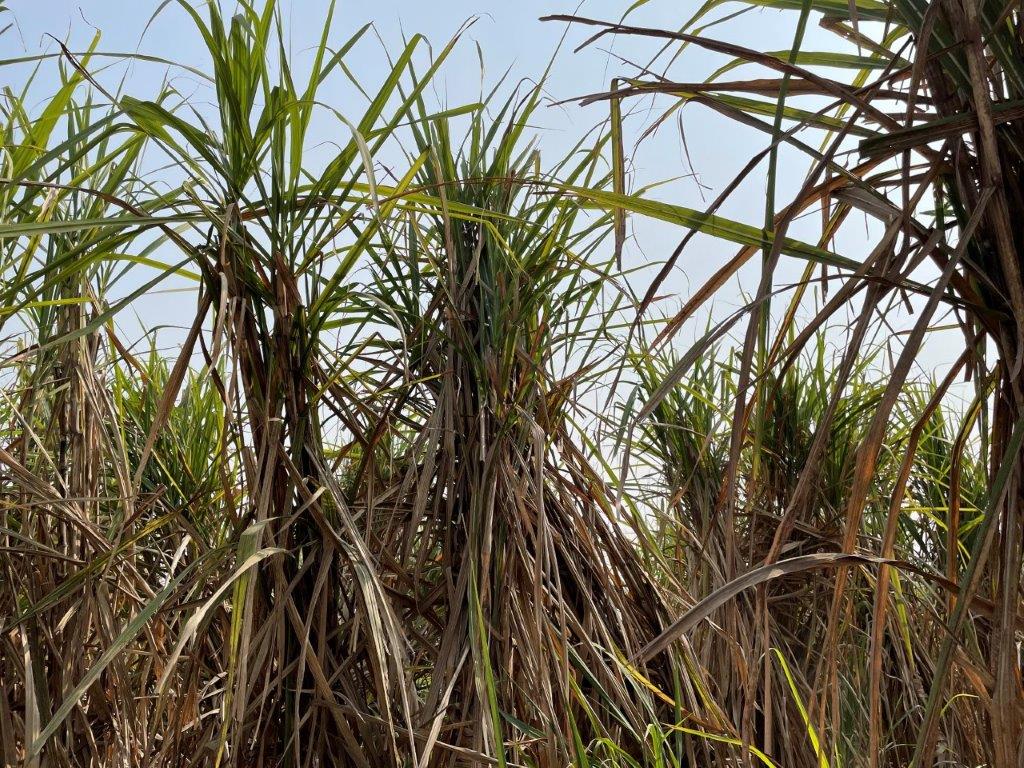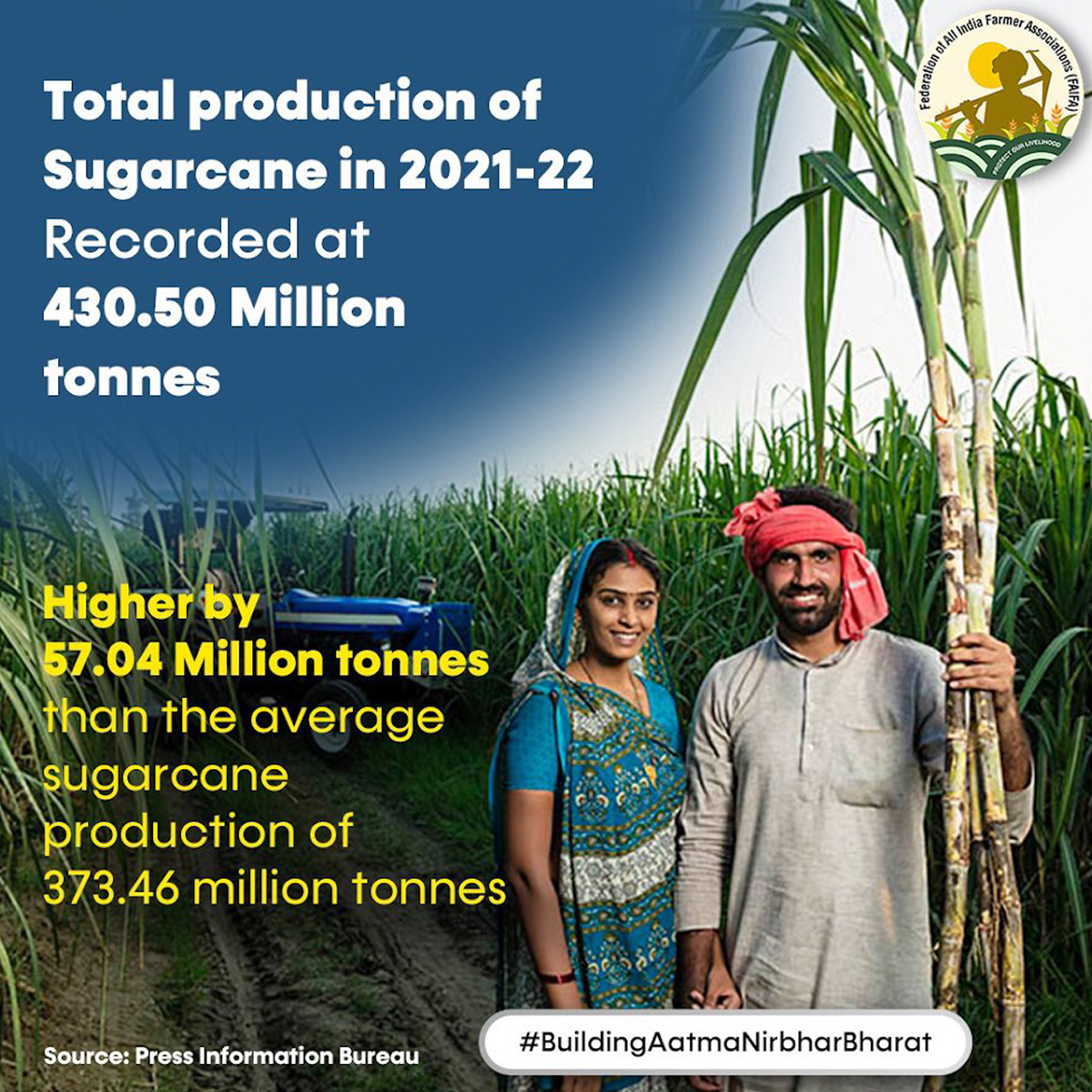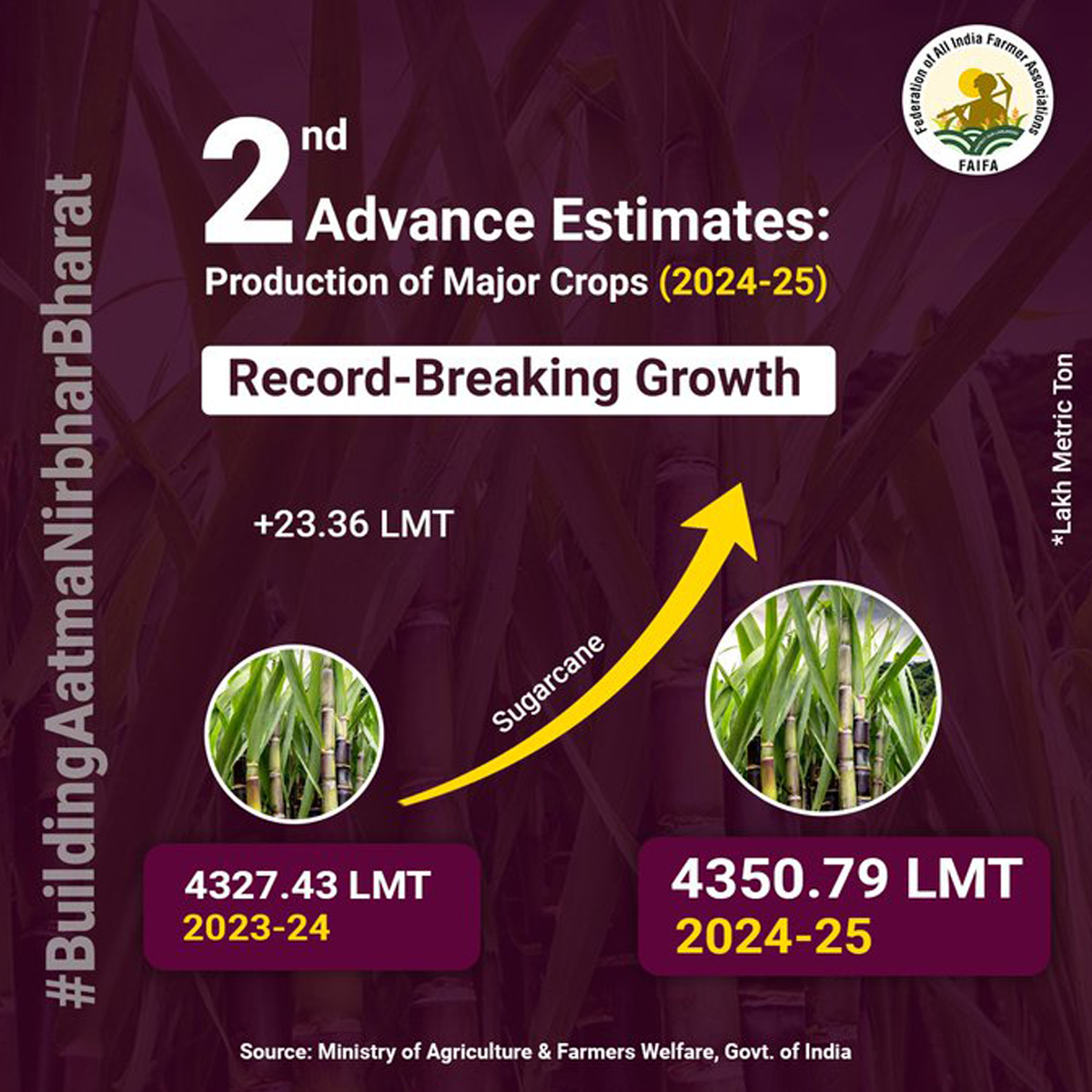Sugarcane
Sugarcane (Saccharum officinarum), a member of the grass family (Poaceae), is a major crop in India, offering direct and indirect employment to millions and significantly contributing to the national economy. India is the world’s second-largest sugar producer after Brazil, followed by China, Thailand, Pakistan, and Mexico.
Originally from New Guinea, sugarcane spread through Asia and the Indian subcontinent via human migration, eventually evolving into the commercial varieties known today.
Cultivated sugarcane falls into two main categories: (a) the hardy, thin North Indian types (S. barberi and S. sinense), and (b) the thick, juicy noble canes (S. officinarum), which are highly valued.

Sugarcane is the primary source of sugar, jaggery (gur), and khandsari. Its juice is processed into white sugar, while by-products like bagasse and molasses support various industries, including alcohol production. In India, around two-thirds of sugarcane is used to make jaggery and khandsari, with only one-third processed in sugar mills.
Climatic Requirement
Sugarcane in India requires a tropical to subtropical climate with ample sunlight and a long growing season of 10 to 18 months. It thrives in temperatures between 20°C and 35°C, with optimal growth at around 30°C. The crop needs a well-distributed annual rainfall of 1000–1500 mm or adequate irrigation in drier regions. While it can tolerate short dry spells, excessive drought or waterlogging can affect yield and sugar content. Frost and extremely low temperatures are harmful to its growth.
Soils
Sugarcane grows best in deep, well-drained, fertile loamy soils rich in organic matter. It also performs well in alluvial and black soils with good water retention capacity. The ideal soil pH ranges from 5.0 to 8.5, though the crop can tolerate slightly acidic to slightly alkaline conditions. Proper soil aeration and good drainage are essential, as waterlogging can damage the roots and reduce yield. If soil is low in pH (less than 5) add lime in soil and for high pH (more than 9.5) do gypsum application.
Sowing Time & Methods
Sugarcane is grown in three main seasons—autumn (September to October), spring (February to March), and adsali (July to August), depending on the region. The most common method of planting is the sett method, where healthy, disease-free cane stalks are cut into 2-3 bud pieces and planted horizontally in furrows spaced about 75–90 cm apart. The furrows are then covered with soil and irrigated regularly. Proper soil preparation, including ploughing and leveling, is essential for good germination. Sugarcane grows best in deep, well-drained loamy soil with a pH between 6.5 and 7.5.
Growing States
India has two main agro-climatic regions for sugarcane cultivation: tropical and subtropical. The tropical region accounts for 45% of the area and 55% of production, while the subtropical region covers 55% of the area and 45% of production. The tropical region includes States like Maharashtra, Andhra Pradesh, Tamil Nadu, and Karnataka, while the subtropical region comprises Uttar Pradesh, Bihar, Haryana, and Punjab. Maharashtra is the largest sugar producer, contributing 34%, and along with Uttar Pradesh and Karnataka, accounts for nearly 80% of India’s total sugar production.
Varieties
India produces a wide range of sugarcane varieties suited to different agro-climatic regions. These varieties are broadly classified into early, mid-late, and late-maturing types. Early-maturing varieties, such as Co 0238 and Co 0118, are popular in northern India due to their shorter growing period and high sugar recovery. Mid-late and late- maturing varieties like Co 86032 and CoC 671 are common in southern and western regions, offering high yields and good juice quality.
Continuous research by agricultural institutes helps in developing disease-resistant, high-yielding, and climate-resilient varieties to enhance productivity across diverse regions.
Water Management
Sugarcane is a water-intensive crop, requiring frequent and adequate irrigation for optimal growth and yield. In India, the crop typically needs about 1,500 to 2,500 mm of water throughout its growing period, depending on the climate and soil conditions. Regions with insufficient rainfall rely heavily on irrigation through canals, tube wells, and drip systems.
Weed Control
Weed control is essential in sugarcane cultivation as weeds compete for nutrients, water, and sunlight, reducing crop yield. Common weeds in sugarcane fields include Cyperus rotundus (nutgrass), Echinochloa colonum (jungle rice), Amaranthus spinosus (spiny amaranth), and Dactyloctenium aegyptium (crowfoot grass). Effective weed management involves a combination of cultural, mechanical, and chemical methods. Pre-emergence herbicides like atrazine (1.0–1.5 kg/ha) and pendimethalin (1.0 kg/ha) are commonly used to prevent weed growth. Post-emergence herbicides such as 2,4-D (0.5–1.0 kg/ha) help control broadleaf weeds. Regular weeding and proper herbicide application significantly improve crop productivity and health.
Glimpses from Our Social Media Posts








<h5 class=”mb-0″ style=”text-align: center; padding: 0.05px; color: #ffffff </h5>
Sugarcane – All India Area and Production
|
|
2019-20 |
2020-21 | 2021-22 | 2022-23 | 2023-24 |
| Area (Million Hectares) |
4.6 | 4.8 | 5.2 | 5.9 | 5.74 |
| Production (Million Tonnes) |
370.5 | 405.4 | 439.4 | 490.5 | 453.2 |
Source: Agricultural Statistics at a Glance 2023, Ministry of Agriculture & Farmers Welfare, Govt. of India
Sugar Exports from India
|
Year |
2020-21 | 2021-22 |
2022-23 |
2023-24 |
|
Value |
20,574.11 | 34,194.47 | 46,046.67 | 22,973.59 |
Source: Department of Commerce, Ministry of Commerce and Industry, Govt. of India
https://tradestat.commerce.gov.in
India’s sugar exports reach more than 120 countries across the globe including countries like Indonesia, Malaysia, Sri Lanka, China, USA, Singapore, Canada, Australia, South Africa, Germany, France, New Zealand, Russia etc.
References:
